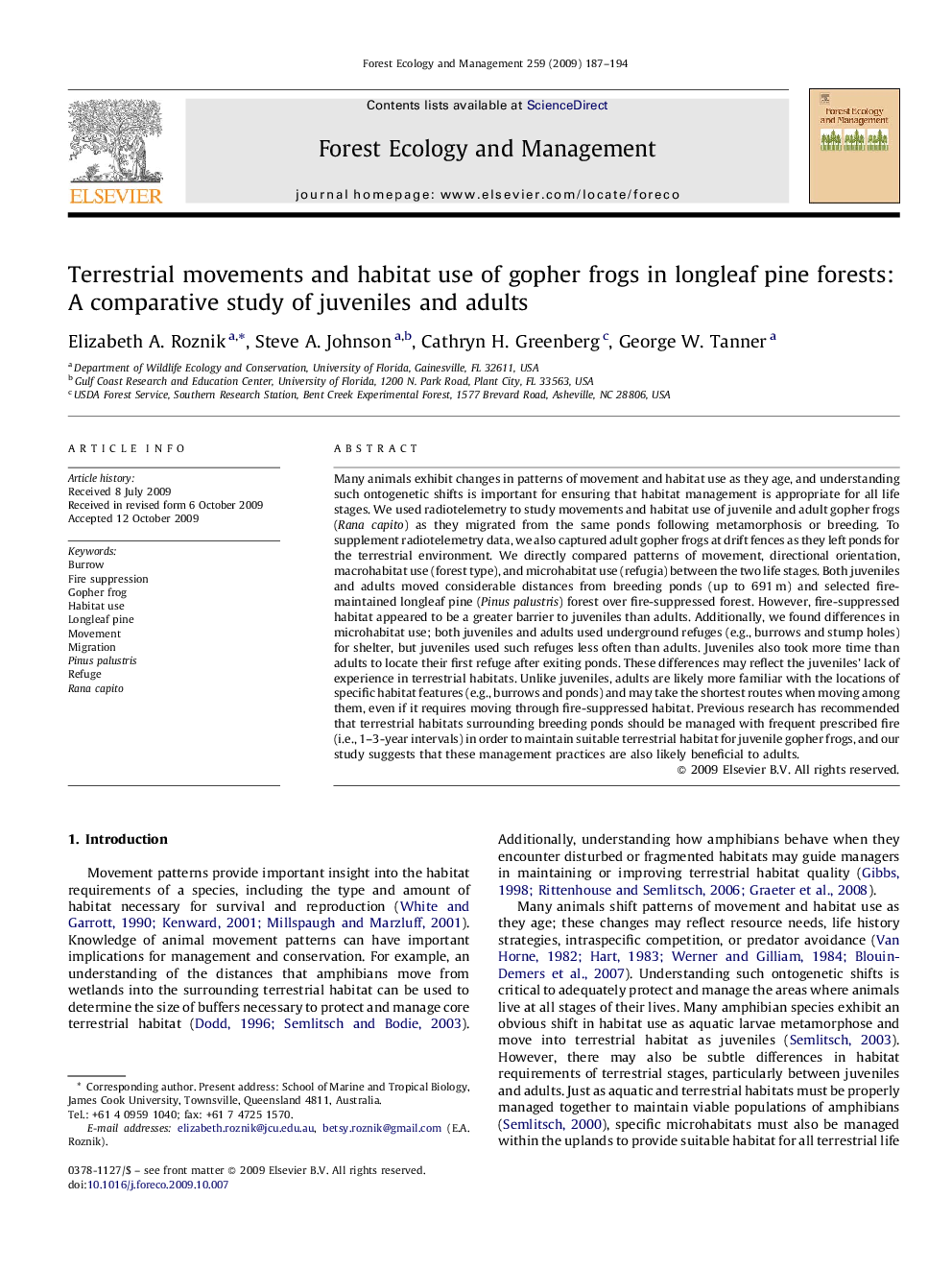| کد مقاله | کد نشریه | سال انتشار | مقاله انگلیسی | نسخه تمام متن |
|---|---|---|---|---|
| 88917 | 159326 | 2009 | 8 صفحه PDF | دانلود رایگان |

Many animals exhibit changes in patterns of movement and habitat use as they age, and understanding such ontogenetic shifts is important for ensuring that habitat management is appropriate for all life stages. We used radiotelemetry to study movements and habitat use of juvenile and adult gopher frogs (Rana capito) as they migrated from the same ponds following metamorphosis or breeding. To supplement radiotelemetry data, we also captured adult gopher frogs at drift fences as they left ponds for the terrestrial environment. We directly compared patterns of movement, directional orientation, macrohabitat use (forest type), and microhabitat use (refugia) between the two life stages. Both juveniles and adults moved considerable distances from breeding ponds (up to 691 m) and selected fire-maintained longleaf pine (Pinus palustris) forest over fire-suppressed forest. However, fire-suppressed habitat appeared to be a greater barrier to juveniles than adults. Additionally, we found differences in microhabitat use; both juveniles and adults used underground refuges (e.g., burrows and stump holes) for shelter, but juveniles used such refuges less often than adults. Juveniles also took more time than adults to locate their first refuge after exiting ponds. These differences may reflect the juveniles’ lack of experience in terrestrial habitats. Unlike juveniles, adults are likely more familiar with the locations of specific habitat features (e.g., burrows and ponds) and may take the shortest routes when moving among them, even if it requires moving through fire-suppressed habitat. Previous research has recommended that terrestrial habitats surrounding breeding ponds should be managed with frequent prescribed fire (i.e., 1–3-year intervals) in order to maintain suitable terrestrial habitat for juvenile gopher frogs, and our study suggests that these management practices are also likely beneficial to adults.
Journal: Forest Ecology and Management - Volume 259, Issue 2, 15 December 2009, Pages 187–194